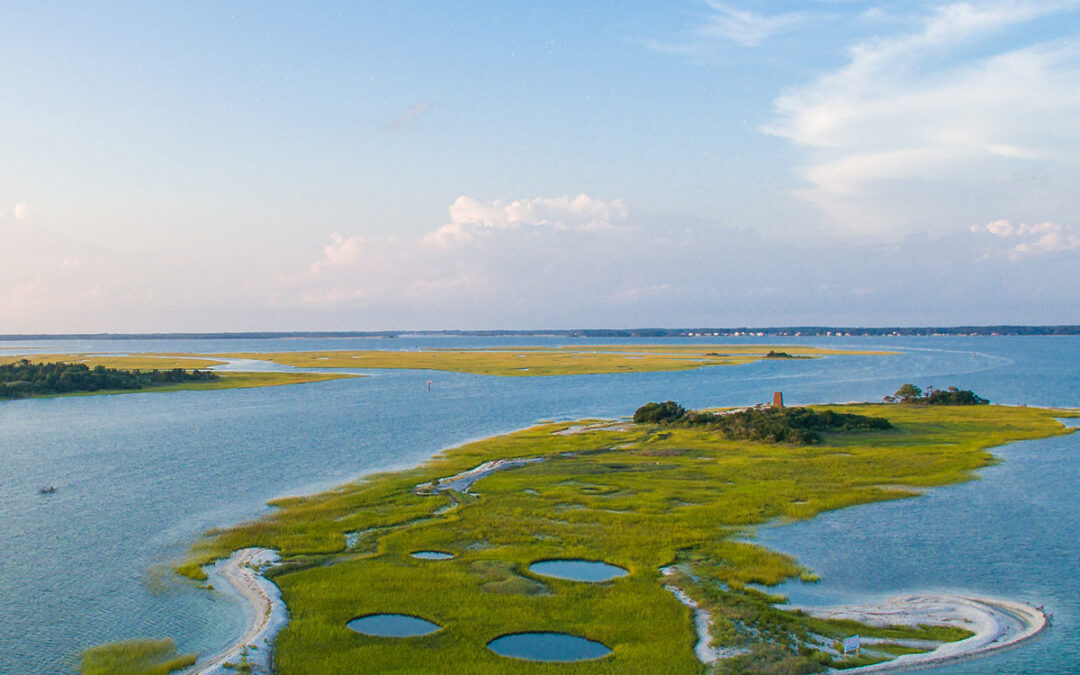Coastal Resources Management, recently updated to the Integrated Coastal Sciences, Ph.D. alumna Dr. Jen Cudney (2015) recently published another paper as a result of her dissertation work studying the migration, local movement patterns, and management strategies for spiny dogfish (Squalus acanthus). While the spiny dogfish was the main focus of her graduate research, there was much to uncover along the way. Cudney and her co-author’s most recent publication, Development of a continental shelf acoustic telemetry array to support behavioral research of fish in a high energy ocean environment, identifies and discusses acoustic array design considerations for high energy ocean environments.

Dr. Jen Cudney, ECU Coastal Resources Management Ph.D., 2015.
In much simpler terms, acoustic telemetry arrays are like fancy sets of fish-finders. They can be deployed for long periods of time to collect data on fish behavior, specifically their movements and migrations. Though these practices have been in place for decades, at the time of the authors’ initial study of the overwintering of spiny dogfish off of Cape Hatteras, NC, it seemed that the most organized efforts occurred within contained, calmer, and more accessible environments such as rivers and estuaries. Furthermore, while some studies had been done in marine environments, they found there little was published as it pertained to the specifications of anchoring systems, deployment and retrieval strategies, and equipment maintenance schedules for arrays sitting in the open ocean. Without such insight, Cudney and her colleagues were left to trial and error while designing and maintaining the acoustic array for their initial spiny dogfish study. Thus, the aforementioned publication details their efforts and findings from the process.
Among their most notable findings, Cudney and her colleagues found that an anchor system comprised of a cement block, a danforth anchor, and galvanized chain kept the elements of the acoustic array in place and stood the best chance against the harsh conditions off the coast. While they acknowledged that some researchers may be able to make use of navigational buoys for mounting platforms, they were not a suitable solution for the nature of their spiny dogfish study.
Upon subsequent deployments of their acoustic array throughout the study, the authors found that it was more feasible to utilize a system which could be easily deployed and retrieved from a vessel instead of having to rely on a dive team. Using divers meant having to wait for the perfect ocean conditions while working time was still limited by the amount of time divers could spend at depth.
Finally, the team of researchers report that monthly maintenance of their equipment was optimal. The time in between servicing was long enough for the equipment to collect data undisturbed and maximize the time and money in their budget while also short enough to ensure the equipment continued to operate properly and did not accumulate significant biofouling to interfere with measurements.
In addition to these three main practical findings, the authors recommended actively involving the local fishing community to gain support and increase deployment area awareness; investing both time and resources from the beginning to mitigate issues that might occur later; and budgeting as much as possible to accommodate for equipment maintenance, especially if sites are offshore.
“[Jen’s] initial work has really been the cornerstone of future work along the east coast of the US for other researchers interested in how to moor acoustic transmitters in the ocean, and determining how fish migrate past Cape Hatteras,” shares Cudney’s former advisor, Dr. Roger Rulifson (ECU Biology).
Cudney’s interest in migratory species continued well after she completed the CRM Ph.D. program in 2015. She now works for the Southeast Branch of NOAA’s Atlantic Highly Migratory Species Management Division.



 Based at the Coastal Studies Institute (CSI), the North Carolina Renewable Ocean Energy Program (NCROEP) advances inter-disciplinary marine energy solutions across UNC System partner colleges of engineering at NC State University, UNC Charlotte, and NC A&T University. Click on the links below for more information.
Based at the Coastal Studies Institute (CSI), the North Carolina Renewable Ocean Energy Program (NCROEP) advances inter-disciplinary marine energy solutions across UNC System partner colleges of engineering at NC State University, UNC Charlotte, and NC A&T University. Click on the links below for more information. ECU's Integrated Coastal Programs (ECU ICP) is a leader in coastal and marine research, education, and engagement. ECU ICP includes the Coastal Studies Institute, ECU's Department of Coastal Studies, and ECU Diving and Water Safety.
ECU's Integrated Coastal Programs (ECU ICP) is a leader in coastal and marine research, education, and engagement. ECU ICP includes the Coastal Studies Institute, ECU's Department of Coastal Studies, and ECU Diving and Water Safety. The ECU Outer Banks campus is home to the Coastal Studies Institute.
The ECU Outer Banks campus is home to the Coastal Studies Institute.

